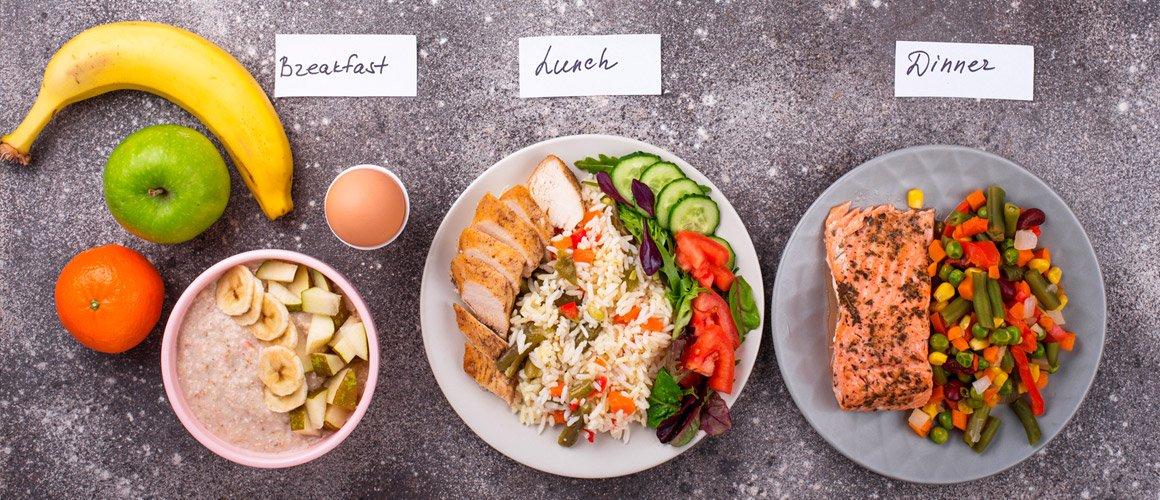Maintaining proper nutrition is essential for everyone, but for seniors, it's even more critical. As we age, our bodies undergo various changes, such as a slower metabolism, reduced appetite, and changes in taste and digestion. These changes make it crucial for elderly individuals to get the right balance of nutrients to stay healthy, maintain energy, and improve their overall quality of life. For seniors in at-home care, nutritious and appetizing meals can make a significant difference in their physical and emotional well-being.
In this blog post, we'll explore a variety of healthy meal ideas, along with practical tips for ensuring seniors receive the nutrition they need. These meal ideas are designed to cater to different dietary needs, and they are easy to prepare for caregivers and loved ones alike.
Essential Nutrients for Seniors
Before we dive into meal options, it’s important to understand which nutrients are most beneficial for seniors. Here are the key nutrients elderly individuals should prioritize in their diets:
Protein
: Supports muscle mass, prevents frailty, and promotes healing. Lean meats, fish, eggs, beans, and legumes are great sources.
Calcium and Vitamin D
: Promote bone health and reduce the risk of fractures. Include dairy products, fortified plant-based milks, and leafy greens.
Fiber
: Aids digestion and prevents constipation. Whole grains, fruits, vegetables, and legumes are fiber-rich choices.
Healthy Fats
: Omega-3 fatty acids are essential for heart and brain health. Fatty fish, flaxseeds, walnuts, and avocados are excellent options.
Vitamins and Minerals
: Focus on potassium, magnesium, vitamin B12, and vitamin C to support heart function, mental clarity, and immune health.
With these nutrients in mind, let’s look at some meal ideas that incorporate these elements and cater to various tastes and dietary needs.
Breakfast Ideas
1. Oatmeal with Berries, Chia Seeds, and Almonds
Oatmeal is an excellent source of fiber and is gentle on the digestive system. Top with fresh or frozen berries for antioxidants, chia seeds for omega-3s, and almonds for added protein and healthy fats. A splash of milk or a plant-based alternative can boost calcium levels.
Variation: For seniors who prefer savory breakfast options, add sautéed spinach, a poached egg, and a sprinkle of cheese to warm oatmeal or polenta.
2. Greek Yogurt Parfait with Honey and Walnuts
Greek yogurt is a high-protein, calcium-rich choice for breakfast. Layer it with honey for natural sweetness and walnuts for heart-healthy fats. Add banana slices or other soft fruits for a vitamin boost. This dish is easy to eat and can be made more filling with granola or seeds.
Variation: For seniors who need a bit more protein, stir in a spoonful of peanut butter or a protein powder into the yogurt.
3. Scrambled Eggs with Avocado and Whole Grain Toast
Eggs are a fantastic source of protein and healthy fats. Scramble them with a splash of milk or cream for extra creaminess. Serve with slices of avocado, which are rich in monounsaturated fats, and a slice of whole grain toast for fiber.
Variation: Add a handful of spinach or diced tomatoes to the eggs for extra nutrients and color. You can also use smoked salmon or cottage cheese as toppings to boost protein and flavor.
Lunch Ideas
1. Grilled Chicken Salad with Quinoa and Avocado
This meal is a perfect balance of protein, healthy fats, and fiber. Grilled chicken breast is lean and easy to chew, while quinoa offers plant-based protein and essential amino acids. Toss in leafy greens like spinach or arugula, avocado for healthy fats, and a simple olive oil and lemon dressing for a refreshing, light meal.
Variation: For a vegetarian option, replace the chicken with grilled tofu or chickpeas. Add some roasted vegetables like sweet potatoes or bell peppers for extra flavor and nutrients.
2. Lentil Soup with Whole Wheat Bread
Lentils are an excellent plant-based protein source, full of fiber and minerals. A simple lentil soup made with onions, garlic, carrots, and celery can provide a filling, warm, and nutritious meal. Serve with whole wheat bread or a whole grain roll for added fiber and texture.
Variation: For seniors who have trouble chewing, puree the soup until smooth. You can also add a dollop of Greek yogurt or a sprinkle of grated cheese for creaminess.
3. Turkey and Avocado Wraps
Whole wheat wraps filled with turkey slices, avocado, and a variety of crunchy vegetables like cucumber and lettuce offer a satisfying meal full of protein and fiber. Add a drizzle of hummus or mustard for extra flavor without the added sodium from processed dressings.
Variation: If wraps are difficult to chew, make a turkey-avocado salad by chopping all the ingredients and serving them in a bowl. Add a side of whole grain crackers or pita chips.
Snack Ideas
1. Apple Slices with Peanut Butter
This classic snack provides both fiber and healthy fats. Slice apples thinly for seniors who may have difficulty chewing, and spread peanut butter or almond butter for added protein. This snack is not only nutrient-dense but also easy to prepare.
Variation: For variety, swap apples for pears or bananas. You can also sprinkle chia seeds or flaxseeds over the peanut butter for an extra boost of omega-3s.
2. Cottage Cheese with Pineapple
Cottage cheese is a rich source of calcium and protein, making it an excellent snack for seniors. Pair it with pineapple chunks or other soft fruits like peaches or melons to add a burst of natural sweetness and additional vitamins.
Variation: For savory flavors, top cottage cheese with cucumber slices and a sprinkle of paprika or pepper. You can also use cottage cheese as a spread on whole grain crackers.
3. Trail Mix with Nuts, Seeds, and Dried Fruit
A homemade trail mix can be a convenient and portable snack. Mix nuts like almonds, walnuts, or cashews with sunflower seeds, pumpkin seeds, and dried fruits like raisins, apricots, or cranberries. This snack provides a perfect balance of healthy fats, protein, and fiber.
Variation: For seniors with dental issues, select soft dried fruits and avoid overly crunchy nuts. You can also add unsweetened coconut flakes or dark chocolate chips for extra flavor.
Dinner Ideas
1. Baked Salmon with Sweet Potatoes and Steamed Green Beans
Salmon is rich in omega-3 fatty acids, which support heart and brain health. Bake the salmon with a drizzle of olive oil and herbs like dill or rosemary. Serve it alongside roasted sweet potatoes for fiber and vitamins, and steamed green beans for a simple but nutrient-packed side dish.
Variation: Swap out salmon for other fish like tilapia or cod, which are also rich in nutrients. You can also puree the sweet potatoes for a softer, smoother texture.
2. Chicken and Vegetable Stir-Fry with Brown Rice
A stir-fry is a quick and versatile dinner option that can be tailored to individual preferences. Use lean chicken breast or thighs, and sauté with a mix of colorful vegetables such as broccoli, bell peppers, carrots, and snap peas. Serve over brown rice or quinoa for added fiber.
Variation: For a plant-based version, use tofu or tempeh instead of chicken. Add a splash of low-sodium soy sauce or tamari for flavor, and sprinkle sesame seeds on top for a nutritious garnish.
3. Beef and Barley Stew
A hearty stew is a perfect way to incorporate lean meats, whole grains, and vegetables into one meal. Use lean cuts of beef, such as sirloin, and slow-cook with barley, carrots, onions, and celery. The barley adds fiber, and the vegetables provide essential vitamins and minerals.
Variation: For seniors who prefer a vegetarian option, replace beef with lentils or chickpeas, and adjust the cooking time accordingly. Serve with a side of whole grain bread or cornbread.
Dessert Ideas
1. Baked Apples with Cinnamon and Walnuts
Baked apples make for a delicious and nutritious dessert. Core the apples and sprinkle them with cinnamon and a handful of chopped walnuts. Bake until soft and serve with a dollop of Greek yogurt or a drizzle of honey for added sweetness and protein.
Variation: For added variety, stuff the apples with raisins or dates before baking, or top them with granola for a crunchy texture.
2. Banana Oat Cookies
These simple cookies can be made with just mashed bananas, oats, and a handful of chocolate chips or raisins. They are soft, easy to chew, and offer a nutritious sweet treat without added sugar.
Variation: Add a spoonful of peanut butter or chia seeds to the cookie dough for extra flavor and nutrition. These cookies can be stored for a quick snack or dessert throughout the week.
Tips for Caregivers: Ensuring Proper Nutrition for the Elderly
Meal Frequency: Seniors may not feel hungry for large meals, so it’s often beneficial to offer smaller, nutrient-dense meals and snacks throughout the day.
Hydration: Encourage hydration by offering water, herbal teas, and fruits with high water content like cucumbers, melons, and oranges. Dehydration can be common among seniors.
Taste and Texture Preferences: Elderly individuals may experience changes in taste or difficulty chewing. Focus on soft, flavorful foods that are easy to eat and digest. Pureeing or chopping ingredients into smaller pieces can help.
Low Sodium and Sugar: Opt for herbs and spices to flavor meals instead of salt. Use natural sweeteners like honey, maple syrup, or fruit to reduce sugar intake.
Tailoring to Dietary Restrictions: Consider specific dietary needs such as low-sodium, diabetic-friendly, or heart-healthy options, and always consult with a healthcare provider or nutritionist if needed.
Conclusion
Good nutrition is fundamental to the health and well-being of elderly individuals, particularly those in at-home care. By providing meals rich in essential nutrients, such as protein, fiber, healthy fats, and vitamins, caregivers can ensure that seniors maintain their strength, energy, and independence. With a little creativity and attention to individual preferences, it’s possible to prepare meals that are both nutritious and enjoyable.












